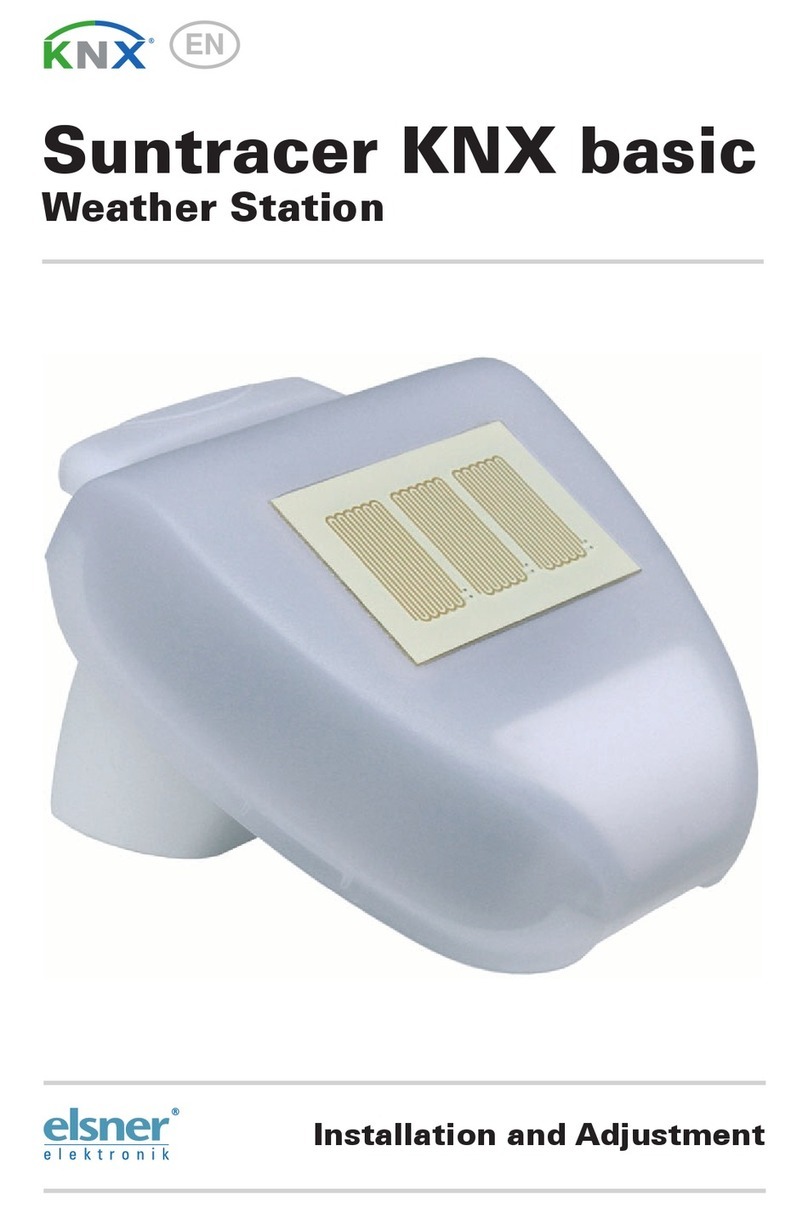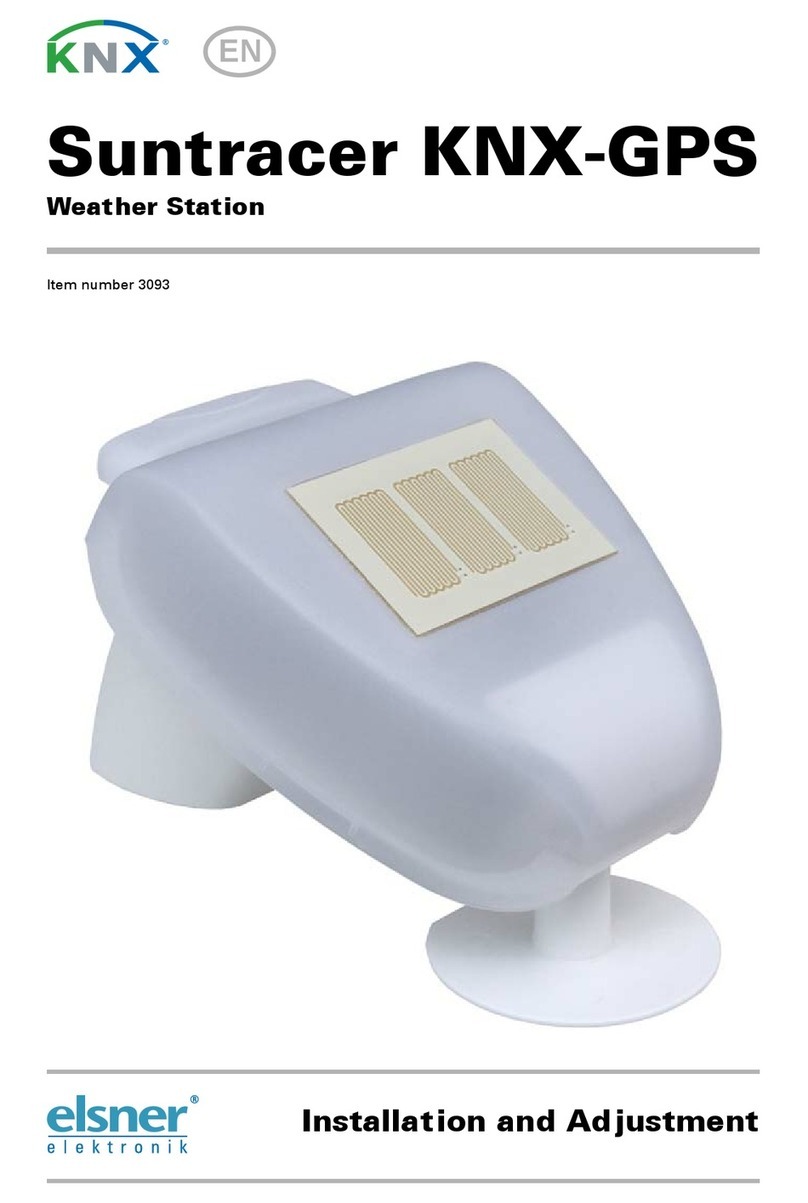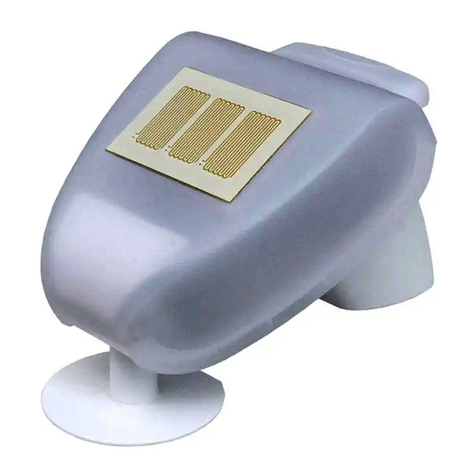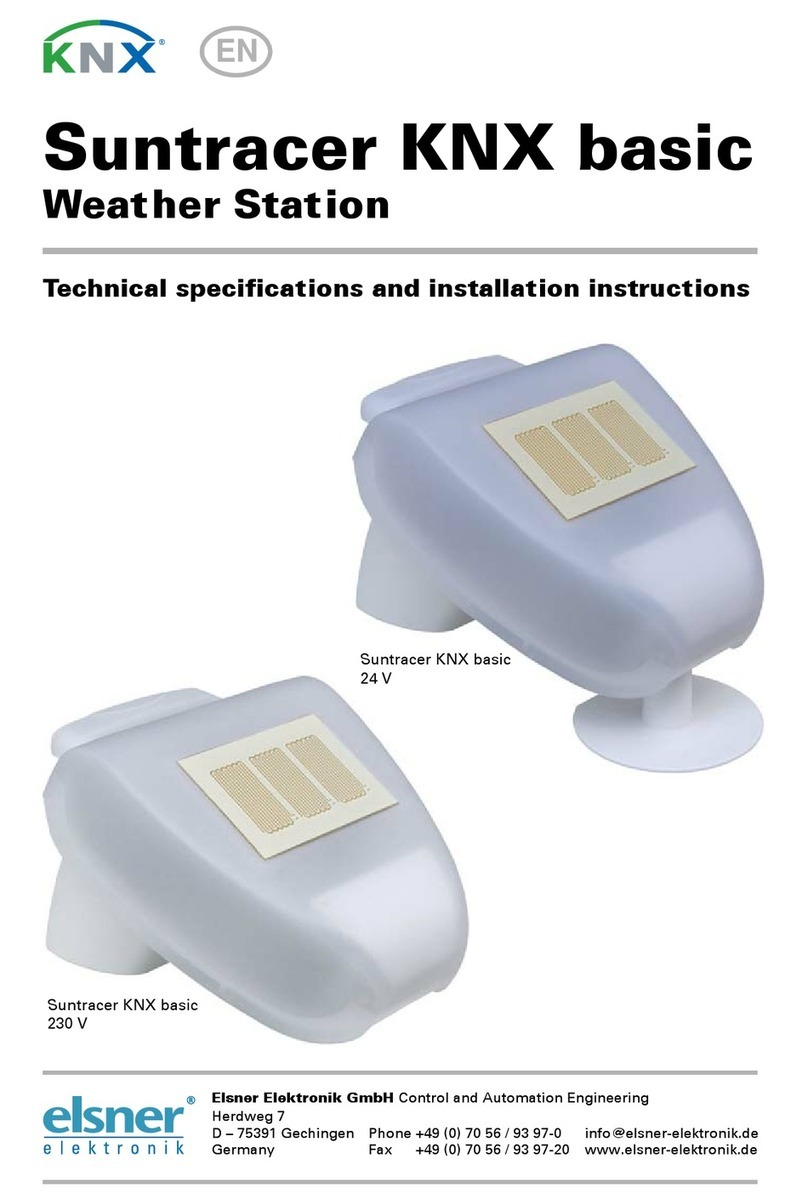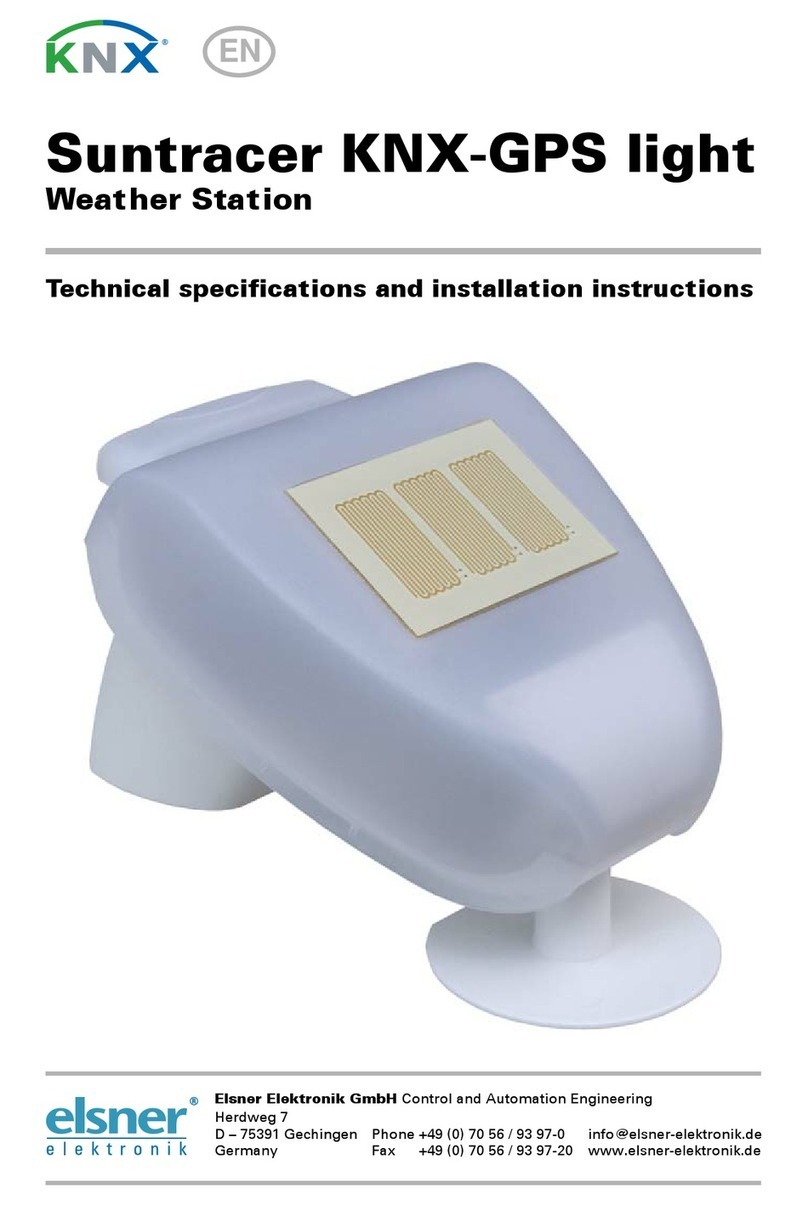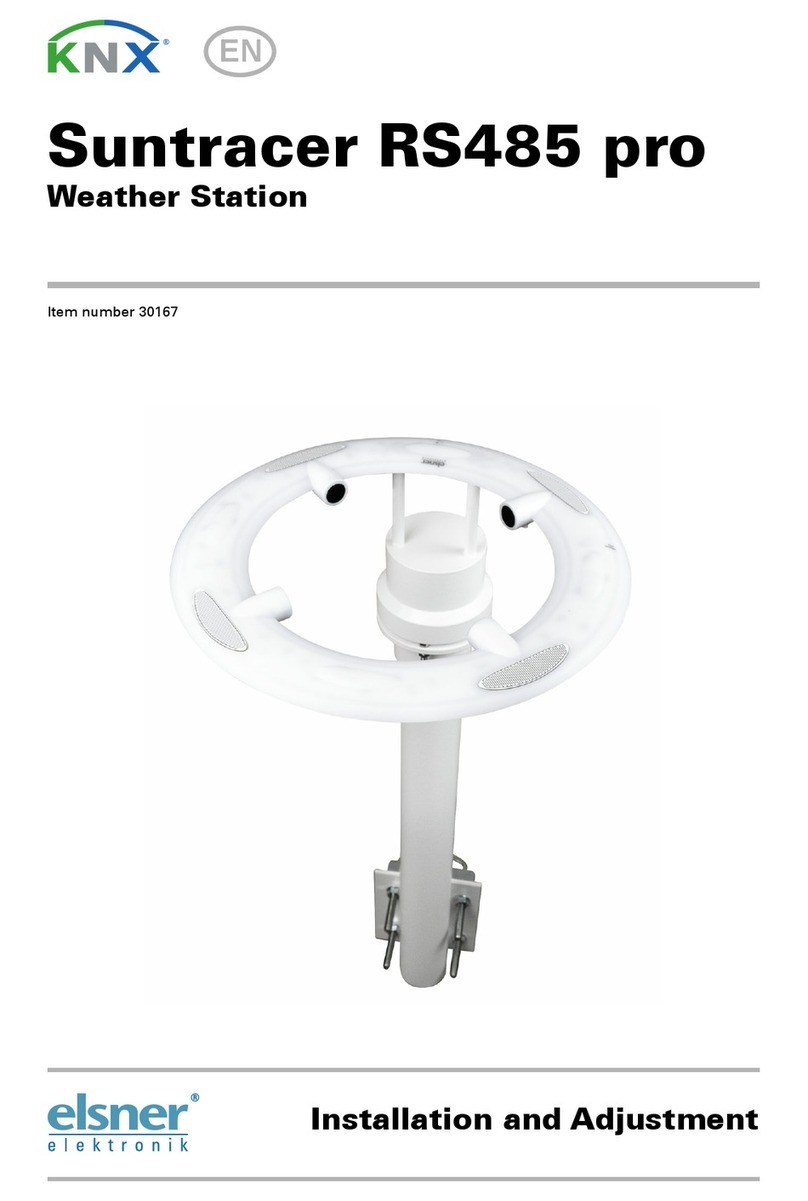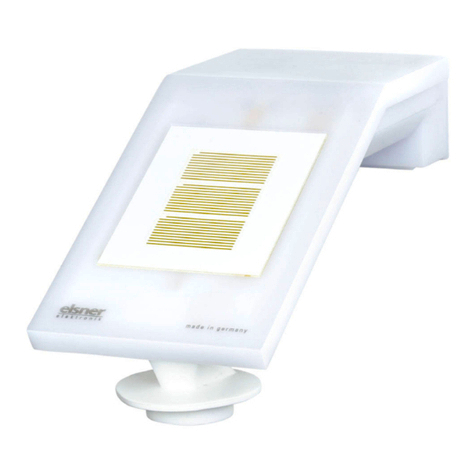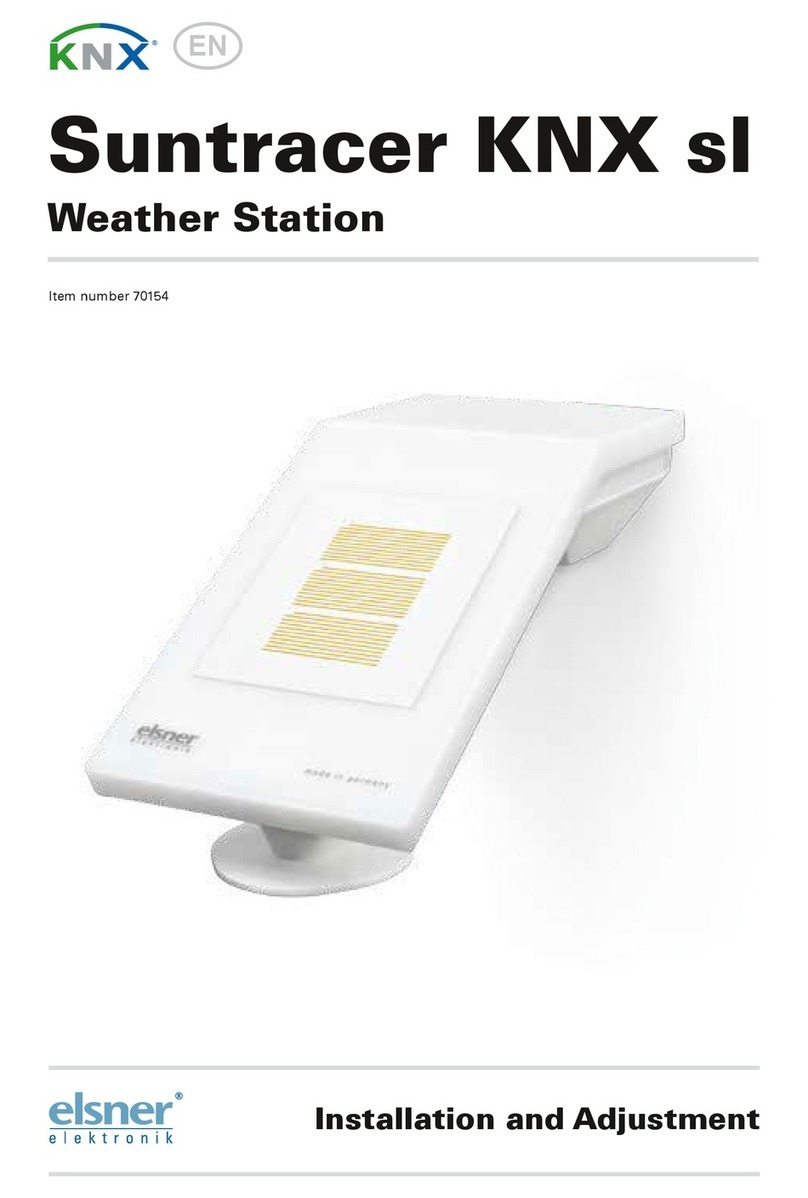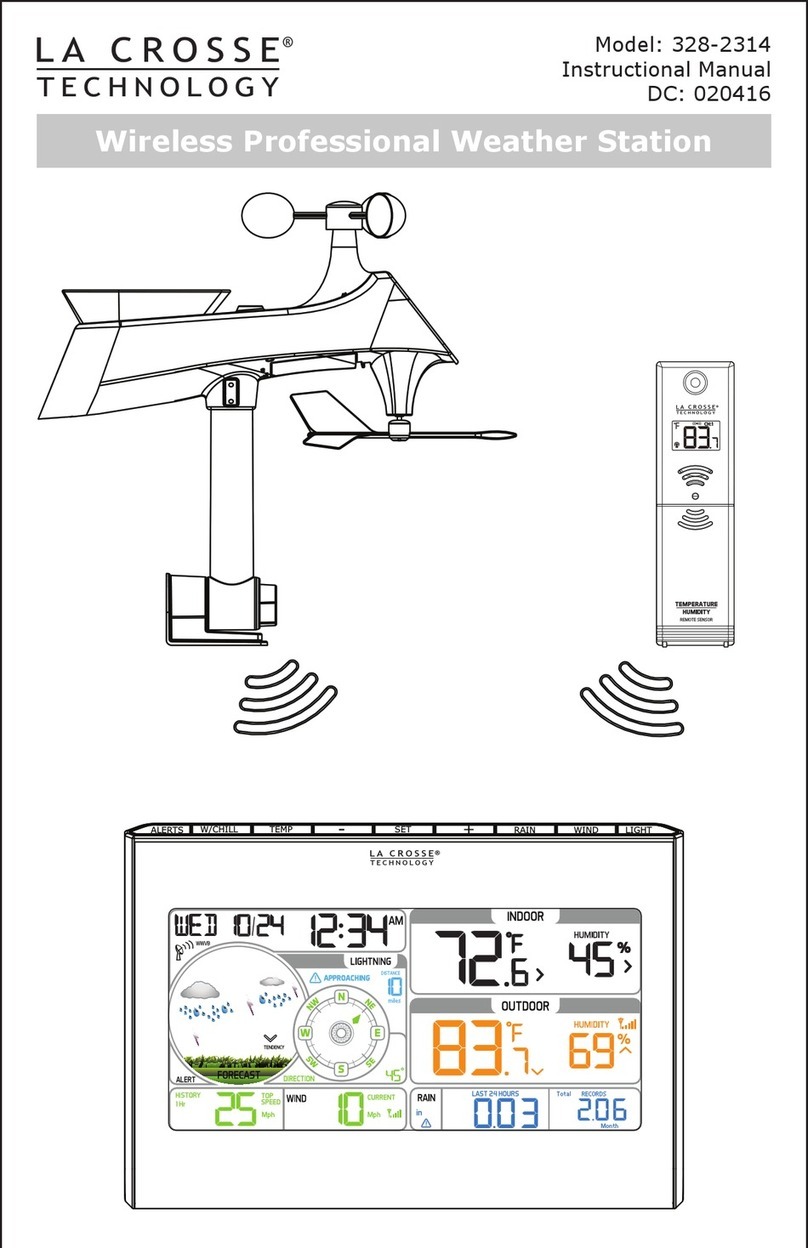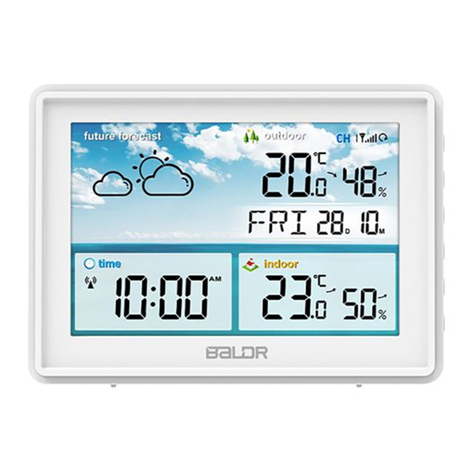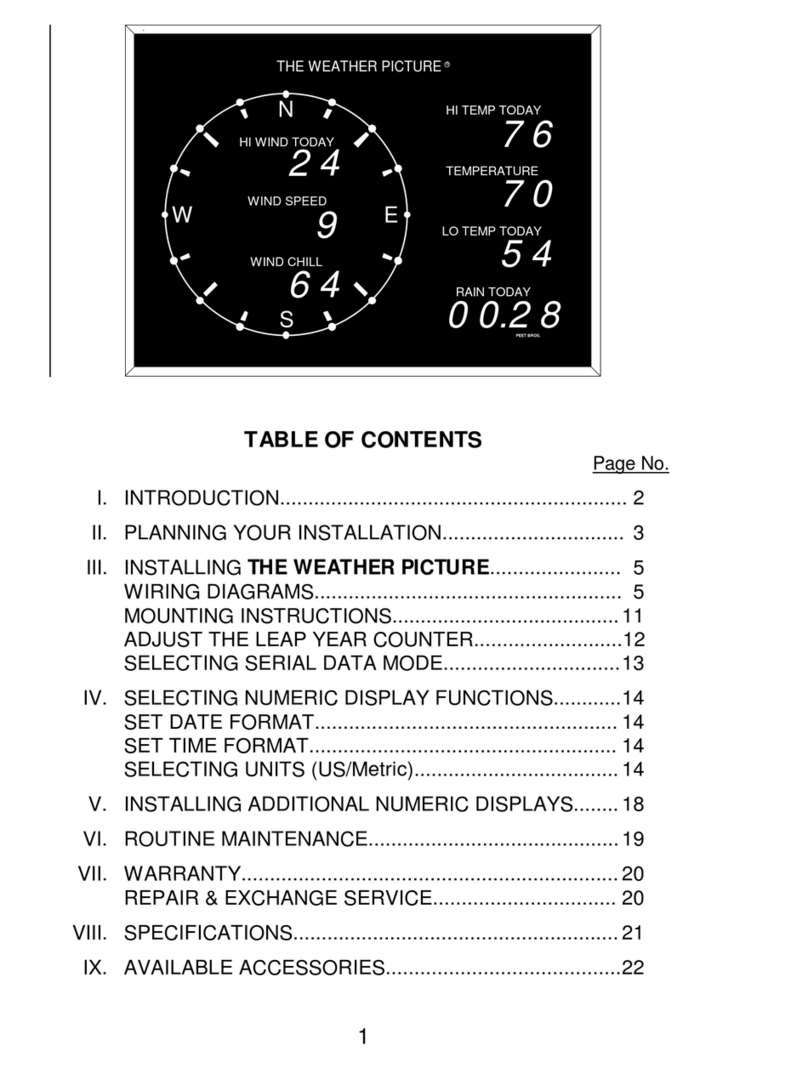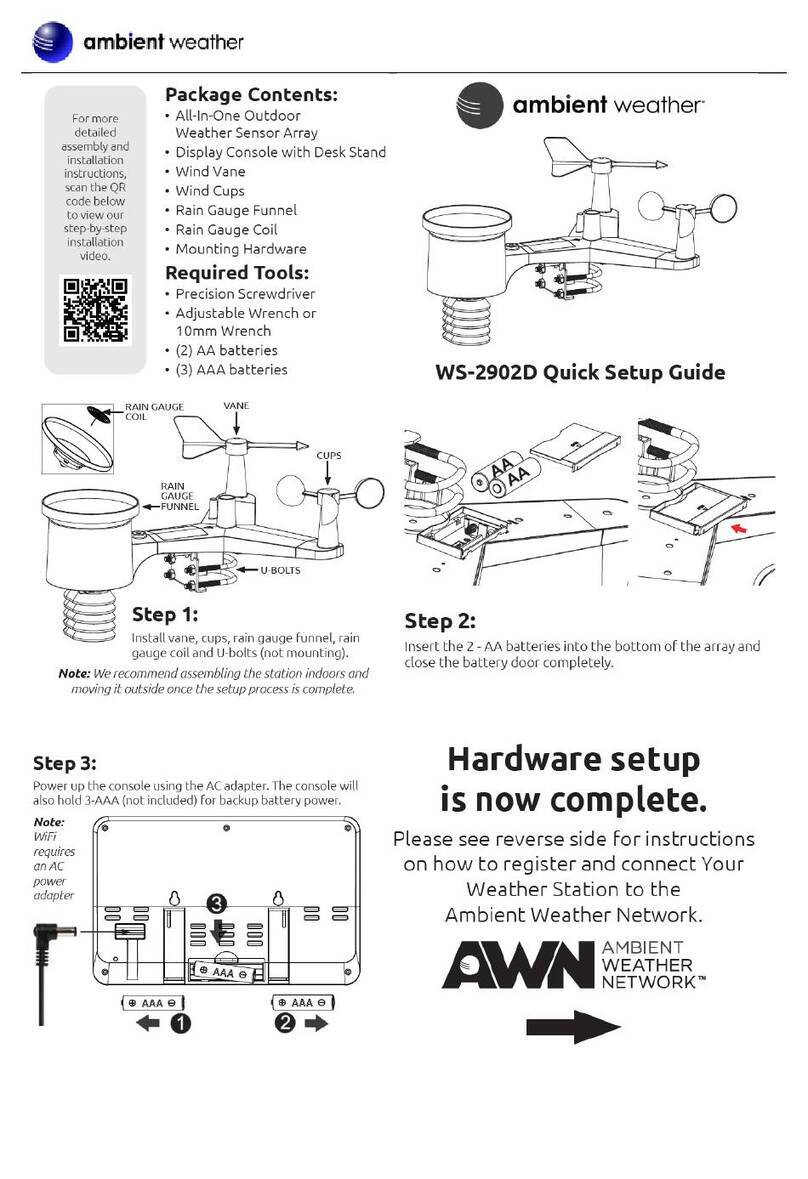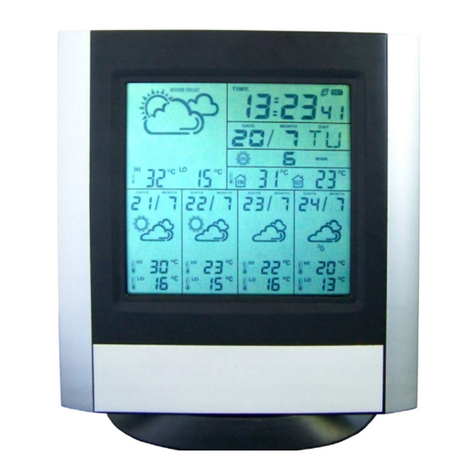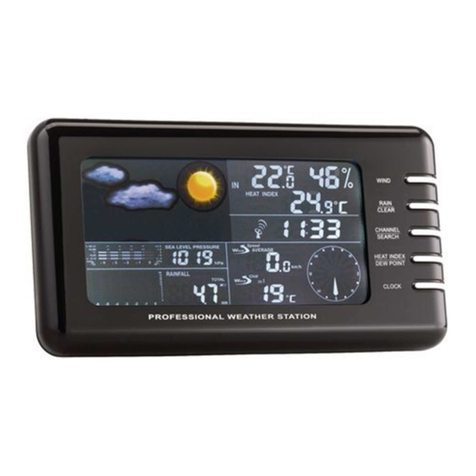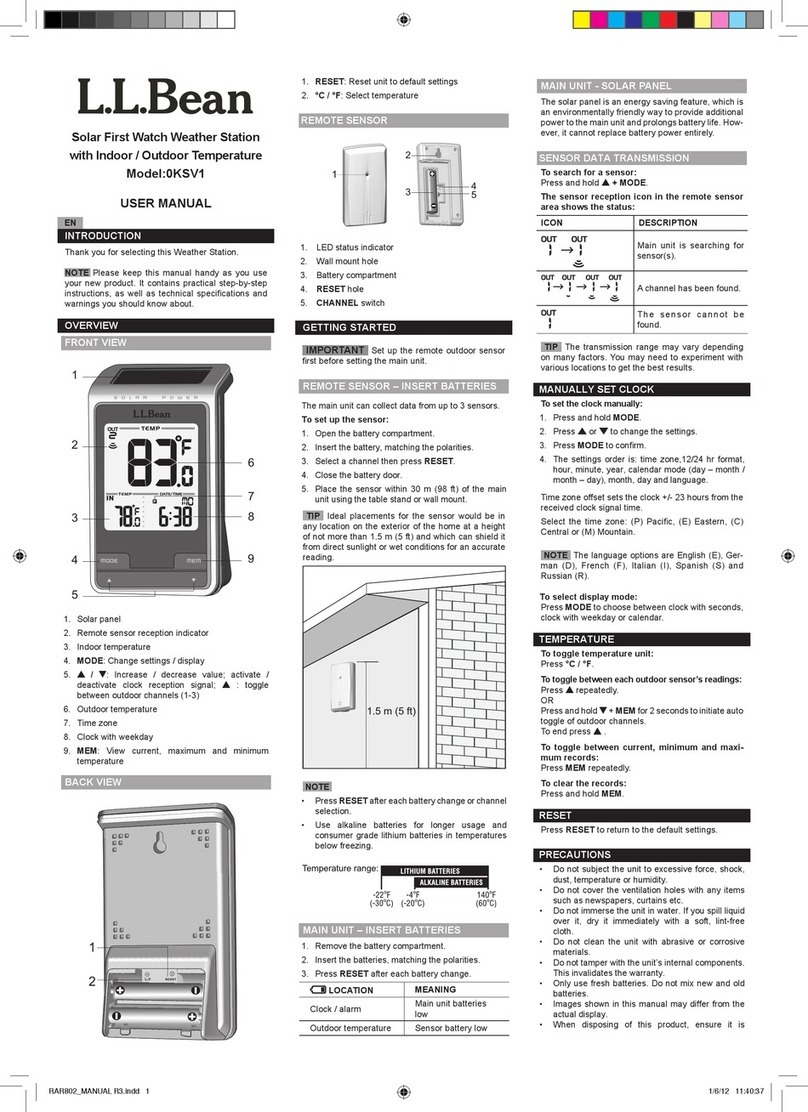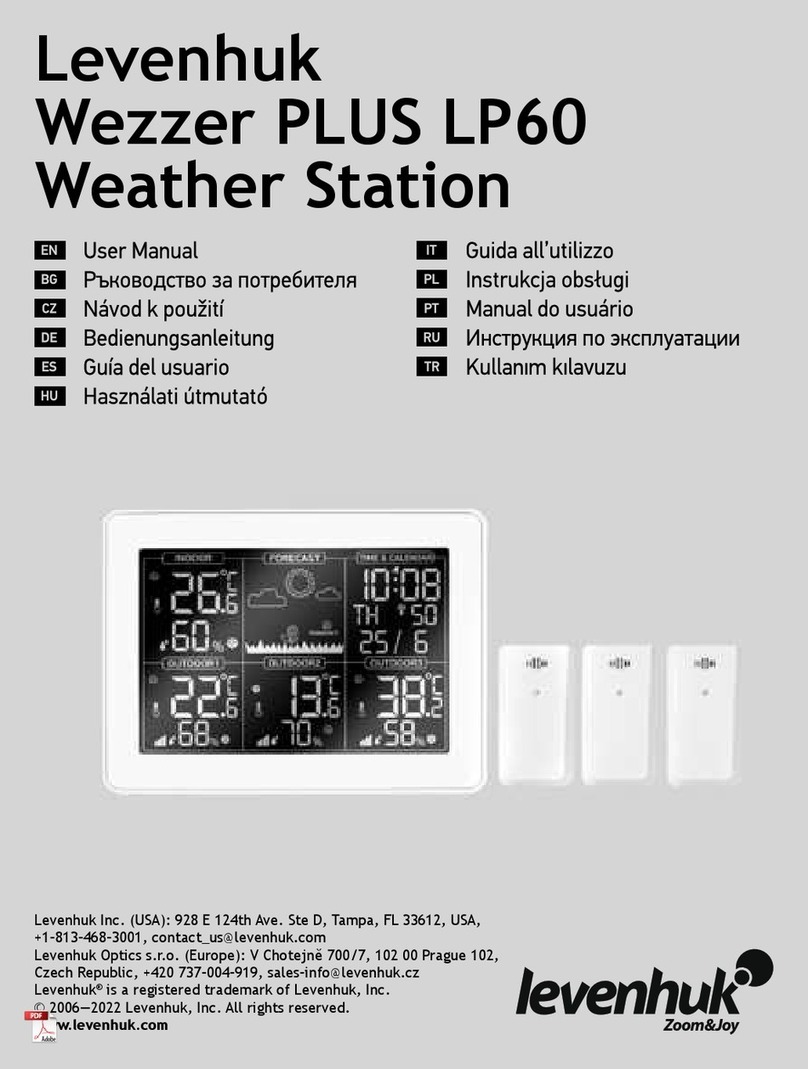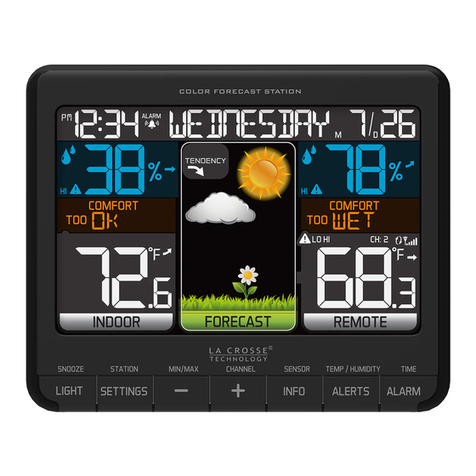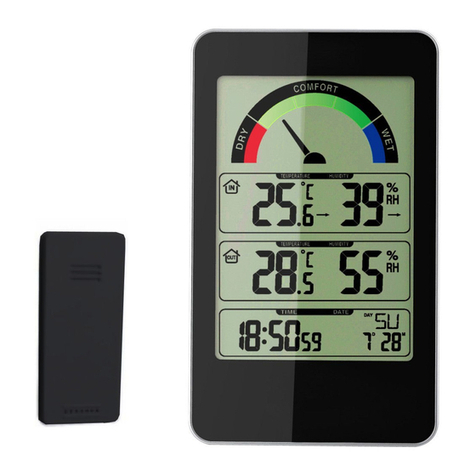1 Contents
Elsner Elektronik GmbH • Sohlengrund 16 • 75395 Ostelsheim • Germany
Weather Station Suntracer KNX basic • from software version 1.06, ETS programme version 1.1
Version: 25.06.2018. Technical changes and errors excepted.
1. Description ........................................................................................... 3
1.1. Technical specifications ........................................................................................... 3
2. Installation and commissioning ........................................................... 4
2.1. Installation notes ...................................................................................................... 4
2.1.1. Location ......................................................................................................... 5
2.2. Mounting the weather station ................................................................................. 6
2.2.1. Attaching the mount ..................................................................................... 6
2.2.2. View of rear side and drill hole plan ........................................................... 8
2.2.3. Weather station layout ................................................................................. 9
2.2.4. Connection of the weather station .............................................................. 9
2.2.5. PCB layout ................................................................................................... 10
2.2.6. Mounting the weather station ................................................................... 11
2.3. Notes on mounting and commissioning .............................................................. 12
3. Addressing of the device at the bus .................................................. 13
4. Maintenance ....................................................................................... 13
5. Transmission protocol ....................................................................... 14
5.1. List of all communication objects ......................................................................... 14
6. Setting of parameters ........................................................................ 18
6.1. General settings ..................................................................................................... 18
6.2. Temperature ........................................................................................................... 19
6.2.1. Temperature threshold value 1 / 2 / 3 / 4 .................................................. 19
6.3. Wind force ............................................................................................................... 20
6.3.1. Wind threshold value 1 / 2 / 3 .................................................................... 20
6.4. Brightness ............................................................................................................... 22
6.4.1. Brightness threshold value 1 / 2 / 3 ........................................................... 22
6.5. Dawn ....................................................................................................................... 22
6.5.1. Dawn threshold value 1 / 2 / 3 .................................................................... 22
6.6. AND Logic ............................................................................................................... 22
6.6.1. AND Logic 1 / 2 / 3 / 4 / 5 / 6 / 7 / 8 .............................................................. 22
6.6.2. Linkage inputs of AND logic ...................................................................... 23
6.7. OR Logic .................................................................................................................. 24
6.7.1. OR Logic 1 / 2 / 3 / 4 / 5 / 6 / 7 / 8 ................................................................ 24
6.7.2. Linkage inputs of OR logic ......................................................................... 25




















